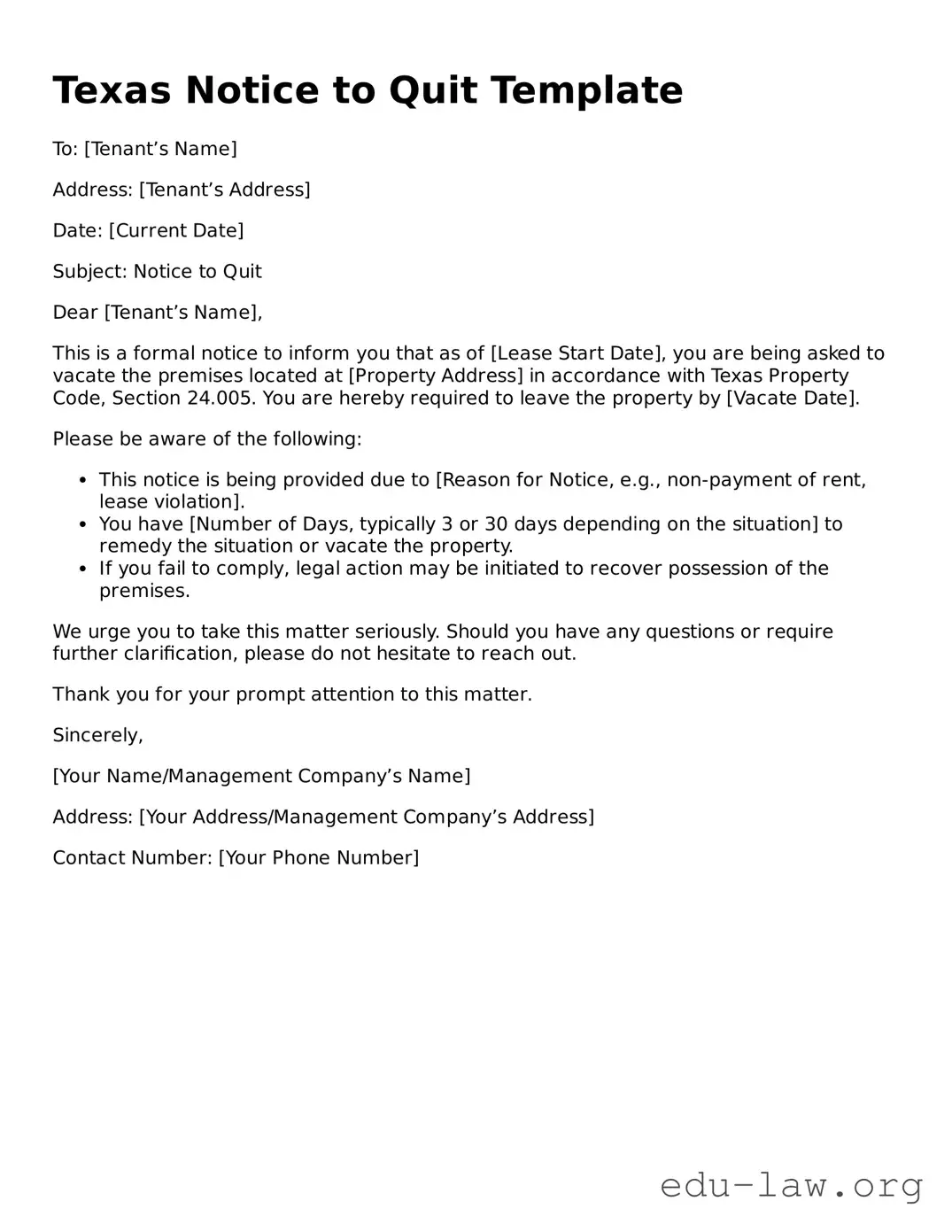What is a Texas Notice to Quit form?
A Texas Notice to Quit is a legal document used by landlords to notify tenants that they must vacate the rental property. This form typically follows a breach of lease agreement or failure to pay rent. It outlines the reasons for eviction and sets a deadline for the tenant to leave the premises.
When should a Notice to Quit be used?
This form is used when a landlord needs to terminate a rental agreement due to specific reasons, such as unpaid rent, lease violations, or expiration of lease terms. It serves as a formal request for the tenant to vacate the property within a specified timeframe.
How long does a tenant have to respond to a Notice to Quit?
The timeframe a tenant has to respond can vary depending on the reason for the notice. For non-payment of rent, Texas law generally allows the tenant three days to either pay rent or vacate. For lease violations, landlords must provide at least a 10-day notice for the tenant to fix the issue before filing for eviction.
Is a Notice to Quit the same as an eviction notice?
No, they are not the same. A Notice to Quit is a preliminary step to eviction. It informs the tenant that they need to leave the property. An eviction notice is usually issued after the Notice to Quit if the tenant does not comply, initiating formal eviction proceedings.
Can a Notice to Quit be sent via email?
In Texas, a Notice to Quit must generally be delivered by personal service or by certified mail. Sending it via email is not considered an official method of delivery unless the lease specifically allows electronic notices.
What information should be included in a Notice to Quit?
A Notice to Quit should include the tenant’s name, rental address, reason for eviction, the date by which the tenant must vacate, and a statement indicating that legal action may follow if the tenant fails to comply.
Can a landlord proceed with eviction if the tenant does not respond to the Notice to Quit?
If the tenant does not respond or vacate by the given deadline, the landlord can file an eviction lawsuit in court. The court will then review the case and determine whether to grant a judgment for eviction.
Are there any defenses a tenant can use against a Notice to Quit?
Yes, tenants may use several defenses, such as proving that they paid the rent, disputing the lease violation, or claiming that the notice was not served properly. Each case is unique, so tenants may want to seek legal advice to explore their options.
What are the consequences of ignoring a Notice to Quit?
Ignoring a Notice to Quit can lead to legal action. If a tenant does not respond or vacate the property, the landlord can file for eviction in court. This could result in a judgment against the tenant, affecting their credit and rental history.
